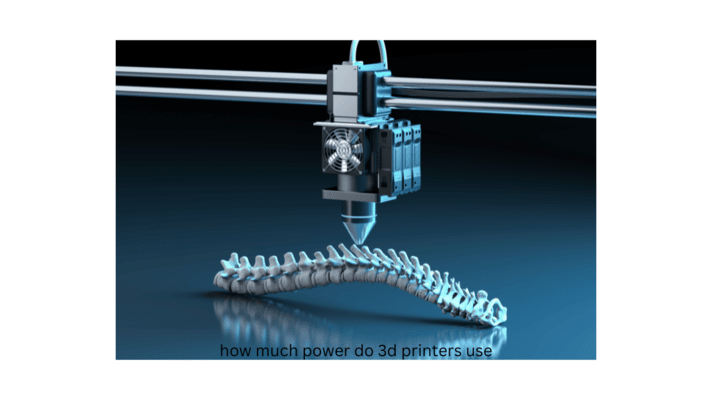3D printing, a progressive innovation, how much power do 3d printers use has changed the manner in which we make models, tweaked items, and, surprisingly, clinical inserts. As this development acquires ubiquity, questions emerge about its ecological effect, especially in regard to control utilization. In this article, we dig into the complexities of how much power 3D printers use and investigate factors that impact their energy elements.
Factors Influencing Power Use
Printer Type and Model
The sort and model of 3D printers assume a vital part in deciding power utilization. Modern-grade printers frequently require more power than their work area partners because of upgraded capacities and bigger form volumes.
Printing Materials
The materials utilized for 3D printing likewise impact power utilization. Various materials have changing liquefying focuses and printing prerequisites, influencing the energy expected to warm and expel them.
Print Speed and Intricacy
Print speed and intricacy contribute altogether to drive utilization. Quicker printing and perplexing plans request more energy as the printer works harder to keep up with accuracy and speed.
Normal Power Utilization
Power Utilization in Backup Mode
In any event, when not effectively printing, 3D printers consume power in backup mode. Understanding and limiting this backup power is essential for generally speaking energy proficiency.
Power Use During Printing
The real printing process is where the majority of energy utilization happens. Factors like layer level, infill thickness, and backing structures all affect how much power is utilized during printing.
Energy Proficiency Tips
Choosing Energy-Effective Printers
Picking a printer with energy-saving elements can fundamentally diminish power utilization. Search for printers furnished with cutting-edge rest modes and power the executive’s frameworks.
Streamlining Printing Settings
Changing printing settings, like layer thickness and infill thickness, can streamline energy utilization without compromising print quality. Exploring different avenues regarding these settings permits clients to track down the right equilibrium.
Picking Eco-Accommodating Materials
Some 3D printing materials are more practical than others. Investigating eco-accommodating choices helps the climate as well as adds to bringing down energy utilization.
Natural Effect

Carbon Impression of how much power do 3d printers use
Understanding the carbon impression of 3D printing includes assessing the whole lifecycle, from unrefined substance extraction to the removal of printed objects. Manageable practices can assist with relieving natural effects.
Reasonable Practices in 3D Printing
Embracing reasonable practices, like reusing materials and taking on roundabout economy standards, can additionally diminish the natural impression of 3D printing.
Normal Confusions
Misjudgment of Force Utilization
There is typical confusion about how much power do 3d printers use are energy pigs. As a general rule, with legitimate settings and cognizant material decisions, the power use can be sensible and proficient.
Tending to Natural Worries
Tending to worries about the natural effect of how much power do how much power do 3d printers use use includes teaching clients on capable practices and supporting for progressions in reasonable advancements.
Future Turns of events
Headways in Energy-Effective 3D Printing
The business is seeing nonstop progressions in energy-productive how much power do 3d printers use advances? From more proficient warming components to further developed cooling frameworks, these advancements intend to diminish power utilization.
Practical Advancements in the Business
Notwithstanding energy proficiency, the 3D printing industry is effectively investigating practical materials and cycles, making it ready for a greener future.
Contextual investigations
Instances of Energy-Effective 3D Printing Undertakings
Featuring fruitful undertakings that focus on energy proficiency can move others to take on comparative practices. Contextual analyses give unmistakable proof of the positive effect feasible.
Examples of overcoming adversity in Diminishing Power Utilization
Recognizing examples of overcoming adversity of associations or people who have successfully decreased power utilization in their 3D printing activities can act as inspiration for other people.
Local area Commitment
Empowering Capable 3D Printing Practices
Cultivating a feeling of obligation inside the 3D printing local area is fundamental. Sharing tips, best practices, and examples of overcoming adversity can make an aggregate exertion towards more feasible 3D printing.
Sharing Tips Inside the 3D Printing People Group
Making a stage for clients to share energy-saving tips and strategies can upgrade local area information and add to a more eco-cognizant way to deal with 3D printing.
Conclusion
All in all, understanding how much power 3D printers use is vital for taking on reasonable and mindful practices in this quickly advancing field. By taking into account factors like printer type, materials, and print settings, clients can limit their carbon impression without forfeiting advancement.
FAQ
Q: Might all 3D printers at any point be viewed as energy-effective?
A: Not all 3D printers are made equivalent. A few models accompany energy-saving highlights, while others might consume more power. It’s fundamental to research and pick a printer in view of productivity.
Q: How might I lessen the backup force of my 3D printer?
A: Check your printer’s settings for rest modes and power-saving choices. Furthermore, consider utilizing brilliant attachments or clocks to control the power supply when the printer isn’t being used.
Q: Are there explicit materials that are more eco-accommodating for 3D printing?
A: Indeed, a few eco-accommodating fibers are accessible, like PLA and reused PETG. Picking these materials adds to a more supportable 3D printing process.
Q: What are a few instances of fruitful energy-proficient 3D printing projects?
A: Ventures that emphasize on upgraded settings, insignificant waste, and feasible materials grandstand energy proficiency. One outstanding model is a venture involving reused sea plastic for 3D printing.
Q: How might I lessen the energy utilization of my 3D printer without compromising print quality?
A: Examination with lower infill densities, use energy-productive printing settings, and investigate progressed highlights in your printer’s product. Furthermore, consider utilizing materials that require lower dissolving temperatures.

